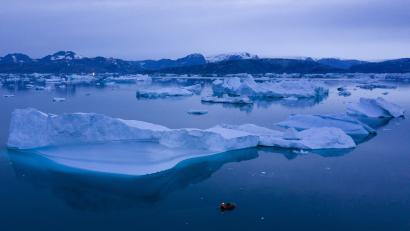
Global warming: Why each fractional degree change matters
Any increase in temperature brings with it havoc, but there is a vast difference between what a 1.5°C rise and what a 2°C rise can do

Apart from a small minority of climate change naysayers, the world agrees that global warming is happening, and the consequences are not pretty.
Already, ice is melting in the polar regions and on mountain glaciers. Giant water bodies such as Lake Superior are warming at a faster pace than their surrounding environment. Trees are budding leaves ahead of schedule during spring, and shedding them later than usual during autumn. In keeping with these changes, animals and bird are altering their hibernation and migration patterns.
Climate experts are concluding that while global warming is yet to reach apocalyptic levels, each fractional change in temperature could have far-reaching consequences. In very specific terms, global warming needs to be limited to 1.5°C. A Reuters report noted that global leaders emphasised this at the COP26 UN climate summit in Glasgow.
What the 1.5°C target means
Put simply, what the target means is that the world should not allow the average temperature to reach a level that’s more than 1.5°C greater vis-à-vis the pre-industrial average. By ‘pre-industrial’, scientists typically refer to the 1850–1900 period. That half-century is regarded as the earliest period with near-global weather observations and is hence taken as the reference period.
Also read: Flood alert sounded in Chennai after Incessant rains; schools colleges shut
As part of the 2015 Paris Agreement, nations across the world committed themselves to limiting the global average temperature rise to below 2°C (above pre-industrial levels). However, the aim is 1.5°C. While any increase in temperature brings with it substantial havoc, scientists are quoted as saying that there is a vast difference between what a 1.5°C rise and what a 2°C rise can do.
It is estimated that we are fast approaching a 1.5°C increase (over the next two decades). This has already translated into torrential rains flooding China and Europe. Cold regions such as Greenland have witnessed significant melting of ice, while several African and Asian countries have suffered droughts. There have been unseasonal wildfires in geographies such as the Mediterranean region and Siberia.
Extreme changes
When we hit the 1.5°C to 2°C threshold, it is feared that every increment will create extreme changes in the climate. For one, heatwaves could increase, both in terms of frequency and severity. Citing the UN Intergovernmental Panel on Climate Change, Reuters has noted that an “extreme heat event that occurred once per decade in a climate without human influence, would happen 4.1 times a decade at 1.5°C of warming, and 5.6 times at 2°C”. If the warming increases to 4°C, it could lead to 9.4 times more such events a decade.
A 0.5°C change in temperature means more evaporation, which in turn means more droughts. Sea levels could rise, eroding coastlines and inundating islands and other coastal regions.
Similarly, food production could take a hit due to crop failures if global warming crosses the 1.5°C threshold, it is feared. It could also usher in more infectious diseases such as malaria and dengue fever.
Last week, the UN’s International Energy Agency said commitments made at the COP26 would, if implemented, would translate into limiting warming to below 1.8°C. While even that promise has drawn scepticism, climate experts point out that it’s a far cry from the 1.5°C change that would be acceptable.


